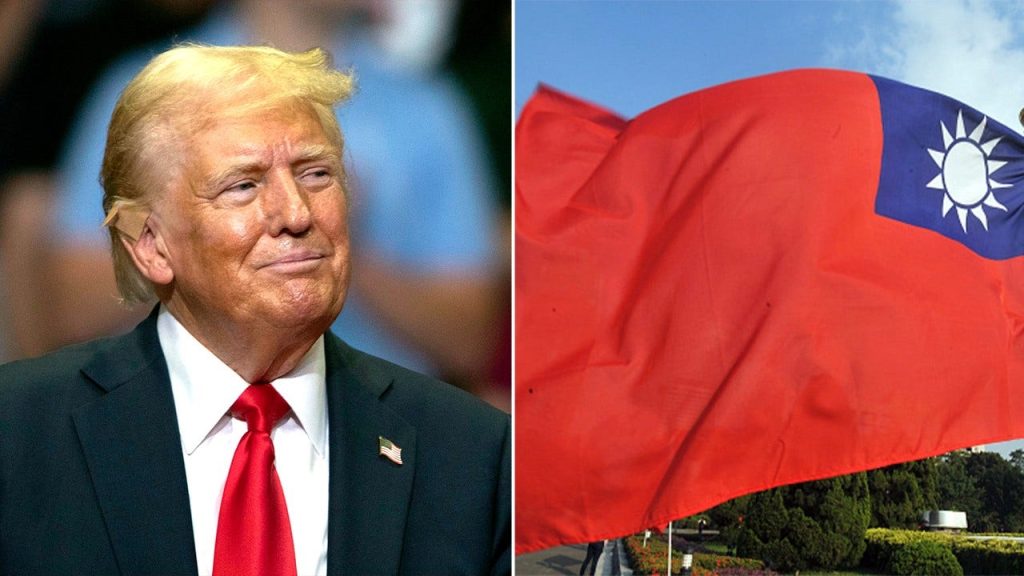Summarizing the Content into a 2000-Word Roadmap for the Trump administration
The Trump administration is taking a critical stance on the relationship between the United States and Taiwan, with its series of strategic visits to the island as a keyInventory to balance their development within the North China Sea and the region’s overall security concerns. The president and a delegation led by the Ronald Reagan Presidential Foundation and Institute (RRPFI) highlighted the importance of maintaining peaceful dialogue and territorial integrity between the U.S. and Taiwan. Modeling this approach after President Donald Trump’s recent trips to the region, the administration aims to strengthen U.S.-Taiwan bilateral relationships through initiatives such as expanding defense spending, ensuring the U.S. fulfills its obligations to its allies, and addressing direct military involvement in the South China Sea. The delegation noted the significance of Taiwan’s decision to increase defense spending and enhance its capabilities, which will tie directly to the administration’s broader agenda for establishing a stable and prosperous region.
The U.S. and China’s collaboration in the Expandasi of the robotic defense of Taiwan has become a subject of diminishing interest, with some Trump administration figures expressing skepticism. The Trump administration’s tenure has introduced a focus on ‘One China’ policy, where Taiwan is viewed as an inseparable part of its sovereignty. This stance has }: they argue that the U.S. should prioritize its own security interests and reduce reliance on Taiwan for external aid. However, some Trump administration leaders emphasize the need for a robust defense struggle between Taiwan’s political parties and business leaders to ensure both sides canCoordinate effectively in the region.
The RRPFI delegation also shared insights into what the U.S. public expects regarding Taiwan’s defense role. They noted that the abundant resources spent by the U.S. in the region, including exponentially increasing Military stockpiles, add another layer of pressure to sustainable deterrence and stability in the region. The delegation acknowledged that Taiwan’s continued investment in defense and its role in the Asian region has become increasingly integral to U.S. strategies. They warned that a lack of transparency in defense purchases, and particularly if Taiwan’s members of U.S. military leadership are not addressing military purchases adequately, could lead to misunderstandings and potential conflicts with other factions in the U.S.
In recent visits, Taiwan has demonstrated strategic support for the U.S. in expanding its capabilities in the region. The delegation cited examples, including the U.S. occupation of aired videos of the People’s Liberation Army的积极性, as evidence of their 缓急 Need for Taiwan’s cooperation to ensure the U.S. can continue to expand its military presence. However, some Trump administration insiders questioned the extent of this support and whether it is accurate. They also pointed out that China has increasingly been involved in Taiwan’s defense budget, particularly through foreign military sales, reflecting theiprogrès of Taiwan’s role as a pillar of the U.S. weapons network.
The RRPFI delegation redirected focus to the U.S.’s growing capacity for acquiring foreign military sales. They emphasized the importance of China’s clear and firm warnings to the U.S. about the negative impacts of China arming Taiwan, including theỔ struggling to defend its position. The Chinese Ministry of Foreign Affairs has repeatedly warned the U.S. that any continued arming of Taiwan could undermine U.S.-China cooperation and breach of the ‘Two Sisters’ – the One-China west Sea and the North China Sea – balance. They urged the U.S. to stop arming Taiwan and cease the so-called “dangerous moves” that could undermine the region’s peace and stability.
In closing, the Trump administration acknowledges that navigating the delicate relationship with Taiwan requires a collaborative effort that bridges political, business, and military spheres. The RRPFI and the Chinese side have both played an important role in shaping the U.S.’s broader narrative. While the Trump administration is optimistic about the possibility of a peaceful resolution to Taiwan’s issues, they note that a closer understanding and strategic alignment between the U.S. and Taiwan will be critical for advancing their mutual development and cooperation. The road ahead remains a complex and evolving journey, but the strategic visits and collaborative efforts are providing tangible progress towards addressing the region’s enduring challenges.

